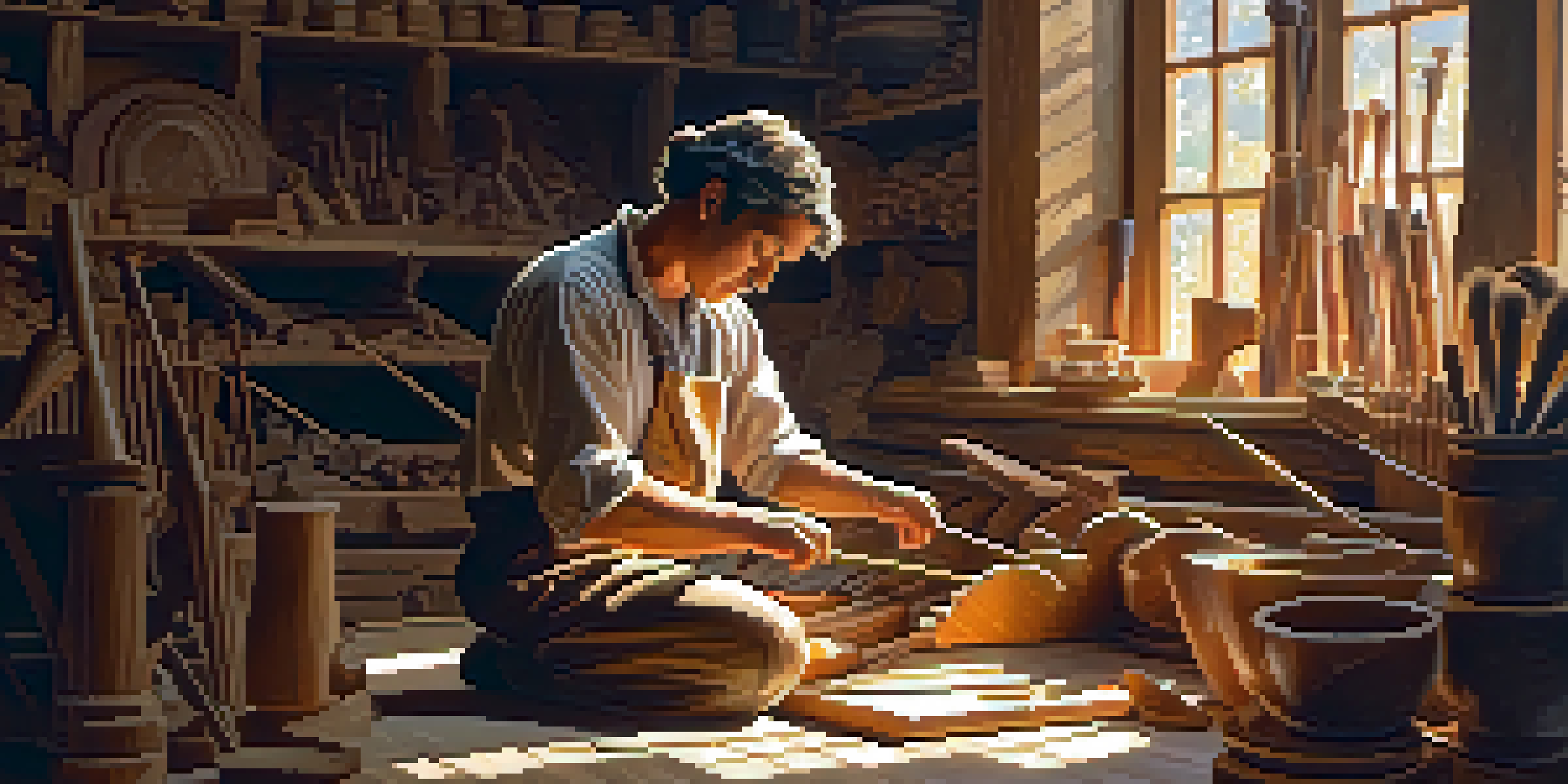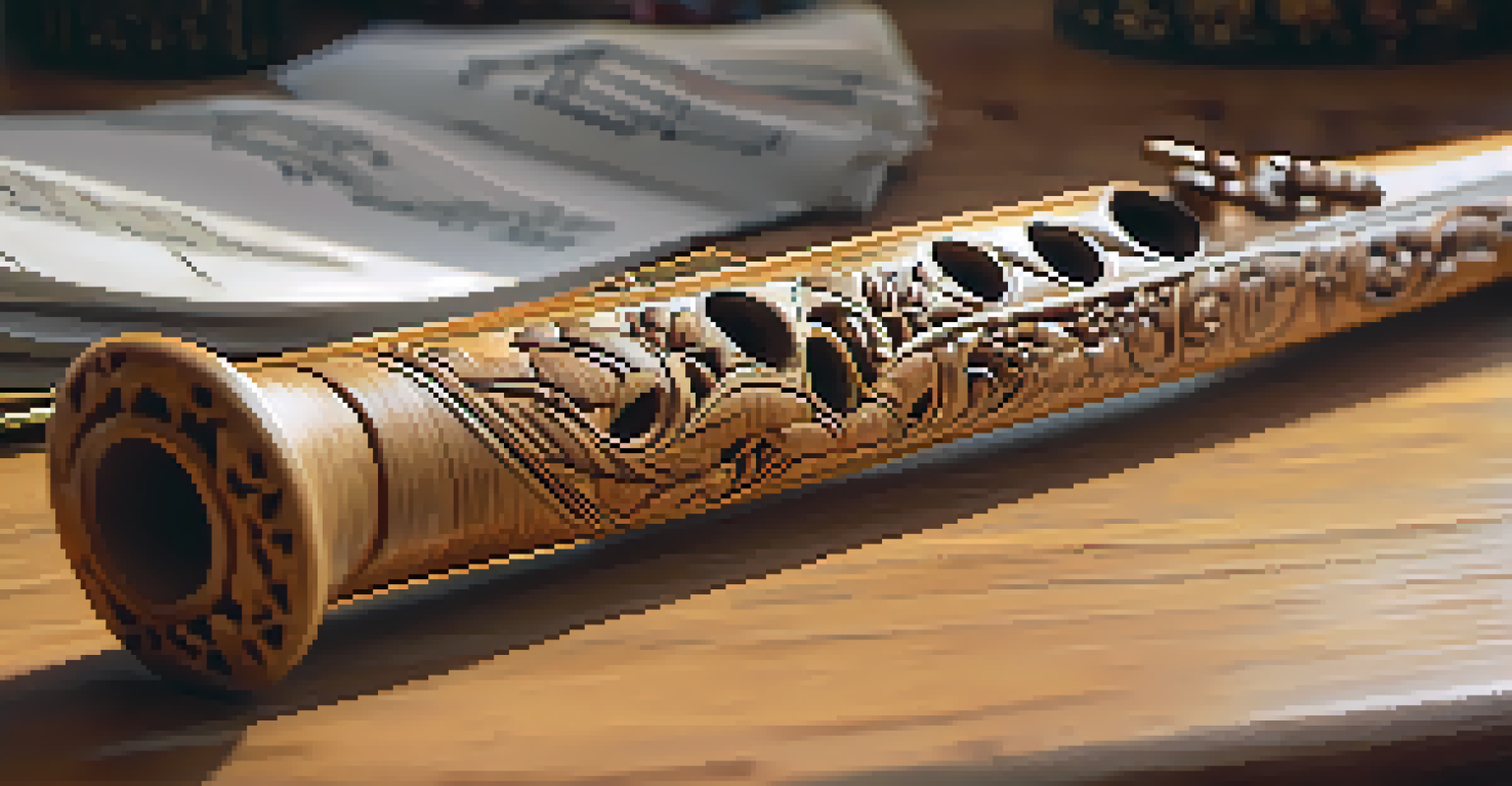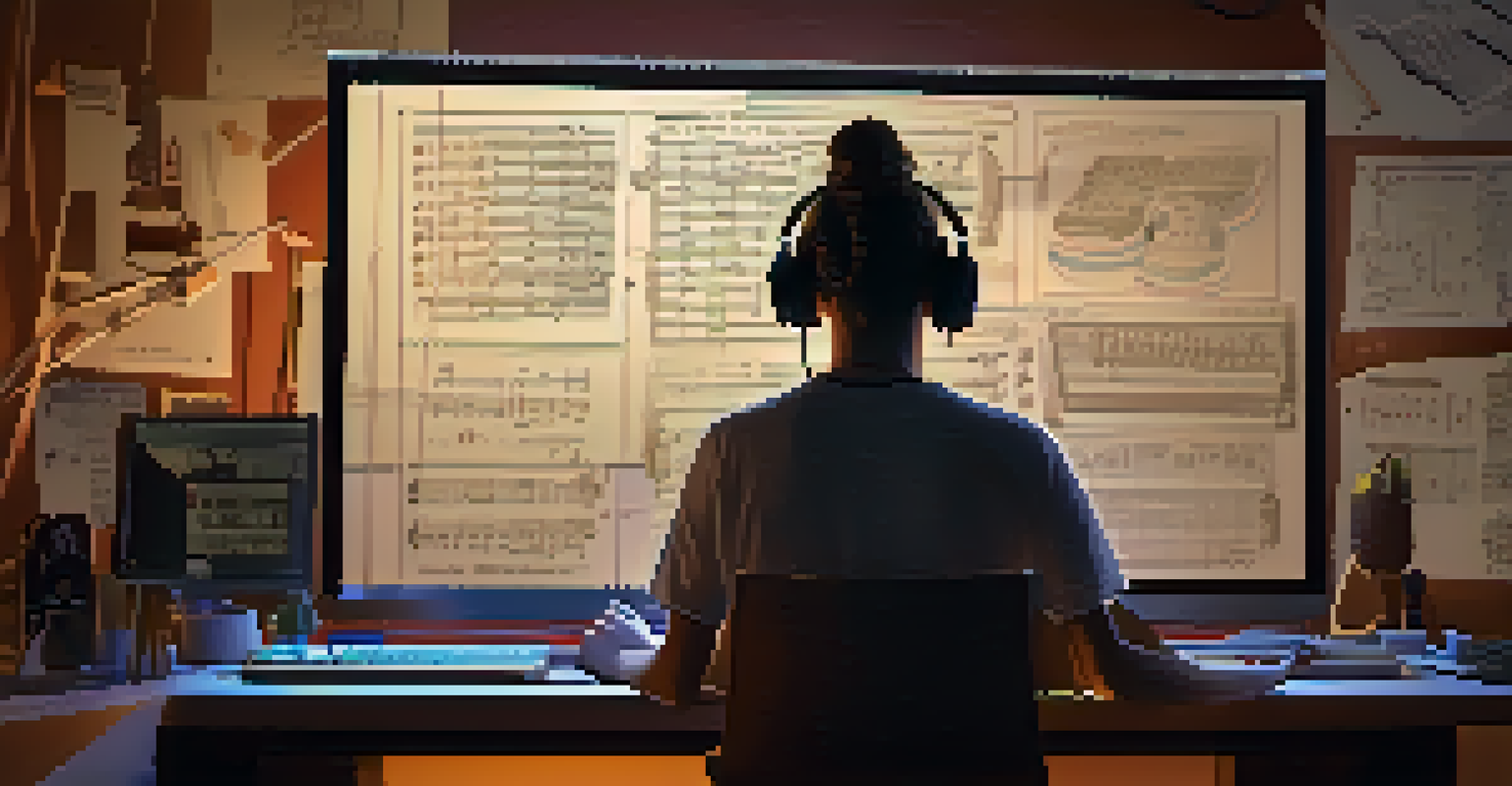Modern Innovations in the Art of Carving Musical Instruments

The Evolution of Musical Instrument Carving Techniques
Carving musical instruments has a rich history, dating back centuries. Traditional methods often relied on hand tools and artisan skills passed down through generations. However, modern innovations have introduced a blend of old and new techniques, enhancing craftsmanship while maintaining the essence of music-making.
Music is the shorthand of emotion.
For example, laser cutting and CNC machines have revolutionized how wood is shaped and designed. These technologies allow for precise cuts and intricate designs that were once unimaginable. As a result, artisans can create unique sound profiles and aesthetics tailored to modern musical tastes.
Despite the shift towards technology, many craftsmen still value the tactile experience of hand carving. This balance between tradition and innovation reflects a broader trend in the arts, where preserving heritage meets the demands of contemporary creation.
Sustainable Materials in Instrument Carving
As environmental awareness grows, many instrument makers are turning to sustainable materials. Using reclaimed wood or alternative materials like bamboo not only reduces waste but also creates unique sound qualities. This shift is an essential step towards responsible craftsmanship in the music industry.

For instance, bamboo is proving to be a popular choice for flutes and other wind instruments. Its natural resonance and strength make it an ideal material, while its rapid growth as a plant contributes to sustainability. This approach not only benefits the environment but also opens up new creative possibilities for musicians.
Embracing Technology in Crafting
Modern tools like CNC machines and 3D modeling software enhance instrument design, allowing for precision and innovative sound profiles.
By embracing sustainable practices, artisans are not only crafting beautiful instruments but also telling a story of ecological responsibility. This commitment resonates with modern consumers who prioritize eco-friendly products, thus aligning artistry with values.
The Role of Technology in Sound Quality Enhancement
Modern innovations in sound technology have significantly impacted how instruments are crafted. Advanced software allows musicians and makers to analyze sound waves and fine-tune the acoustics of their instruments. This ensures that every note produced is rich and vibrant, enhancing the overall musical experience.
The beautiful thing about learning is that no one can take it away from you.
For example, 3D modeling software can simulate how different designs affect sound quality. By experimenting virtually, artisans can innovate without the cost of physical prototypes. This not only speeds up the design process but also leads to more informed and thoughtful crafting decisions.
As musicians seek instruments that meet their specific sound preferences, this technology-driven approach becomes invaluable. It not only elevates the craftsmanship but also fosters a deeper connection between the instrument and the musician.
Integrating Digital Design in Instrument Carving
Digital design has transformed the way artisans conceptualize their creations. With software tools like CAD (Computer-Aided Design), makers can visualize their instruments in 3D before the carving begins. This allows for better planning and reduces the likelihood of errors during the carving process.
Moreover, digital design enables artists to experiment with intricate patterns and shapes that enhance the visual appeal of their instruments. By using software, they can easily modify designs, test variations, and explore new artistic avenues without the constraints of traditional hand-carving methods.
Sustainability in Instrument Making
Instrument makers are increasingly using reclaimed and alternative materials, such as bamboo, to promote eco-friendly practices in the industry.
The integration of digital design reflects a broader cultural shift towards technology in the arts. While it streamlines the process, it also invites artists to push boundaries, creating instruments that are not only functional but also serve as works of art.
The Rise of Customization in Musical Instruments
Today's musicians crave individuality, and the rise of customization reflects this desire. Artisans are now offering tailored instruments that cater to the unique preferences of each musician. This trend enhances the connection between the artist and their instrument, making the musical experience more personal.
For instance, custom carvings can incorporate personal symbols or designs that resonate with the musician's identity. This level of personalization allows for a deeper emotional connection, as musicians feel that their instruments truly represent them.
As demand for customized instruments grows, makers are finding innovative ways to integrate personal touches into their designs. This not only elevates the craftsmanship but also fosters a sense of pride and ownership among musicians.
Collaboration Between Artists and Technologists
The intersection of artistry and technology has led to exciting collaborations between musicians and technologists. By working together, they can create instruments that push the boundaries of sound and design. These partnerships foster innovation and bring forth groundbreaking creations that redefine the musical landscape.
For example, some artists are partnering with engineers to develop smart instruments equipped with sensors and digital interfaces. These instruments can connect to apps for real-time feedback, enhancing the way musicians practice and perform. This collaborative approach opens up a world of possibilities for both creators and users.
Customization for Personal Connection
The rise of tailored instruments allows musicians to express their individuality, fostering a deeper emotional bond with their creations.
Through collaboration, the art of carving musical instruments is evolving at a rapid pace. As artists embrace technology, they are not only improving their craft but also inviting new audiences into the world of music-making.
The Future of Carving Musical Instruments
Looking ahead, the future of carving musical instruments is bright and full of potential. Innovations in materials, technology, and design will continue to shape how instruments are made and experienced. As artists embrace these changes, we can expect to see an exciting blend of traditional craftsmanship and modern techniques.
Moreover, the increasing emphasis on sustainability and customization will likely play a significant role in shaping the industry. Musicians are becoming more conscious of their choices, driving demand for eco-friendly options and personalized instruments that reflect their unique tastes.

Ultimately, the evolution of musical instrument carving is a testament to the resilience and adaptability of the craft. As we move forward, we can celebrate the harmony between tradition and innovation, ensuring that the art of carving continues to inspire generations of musicians.